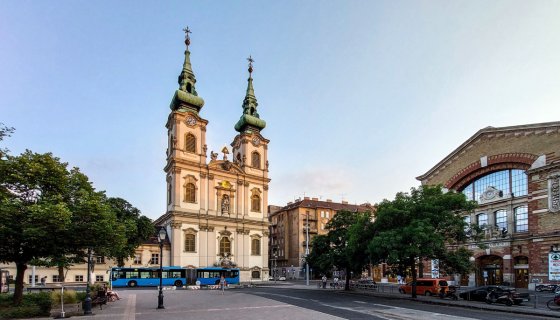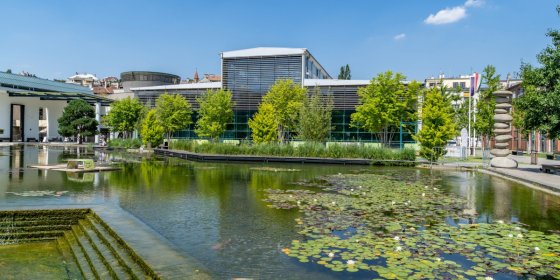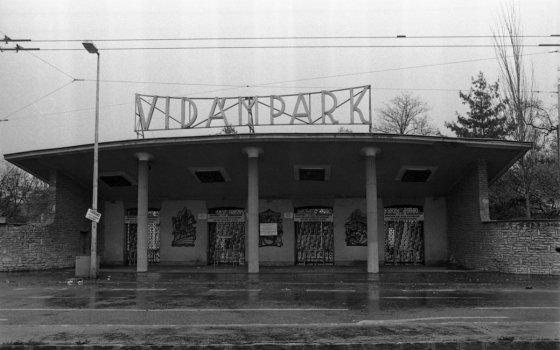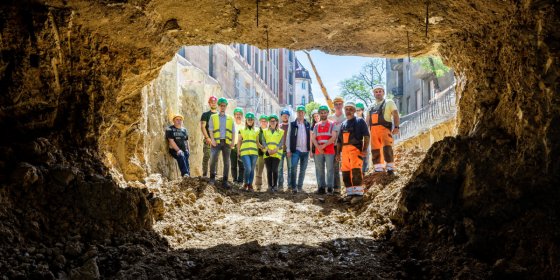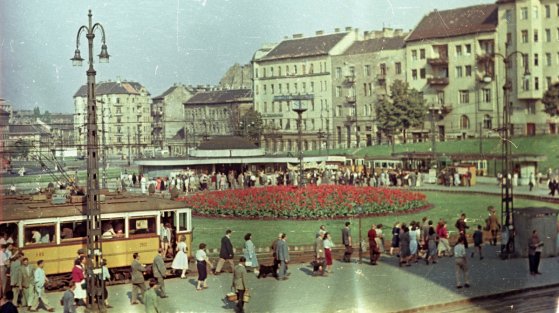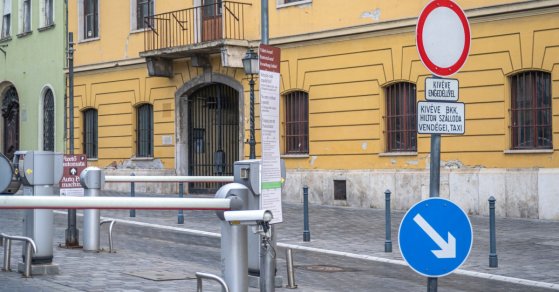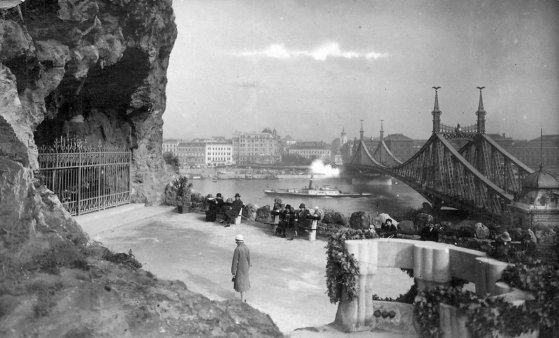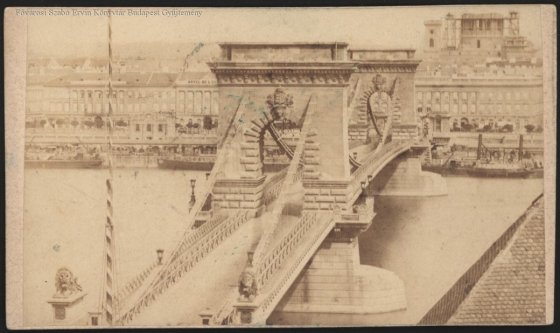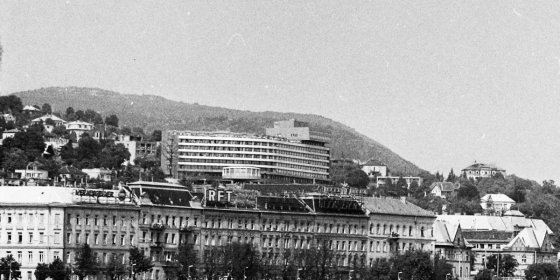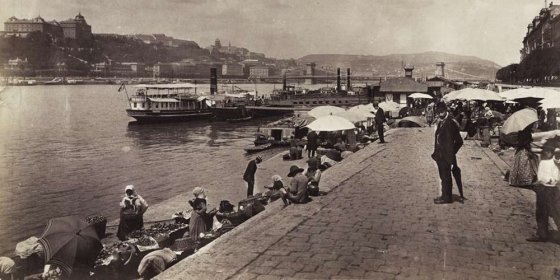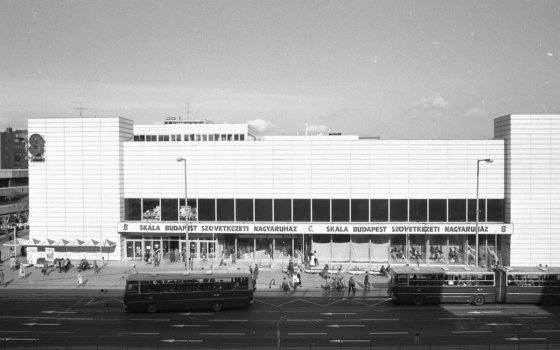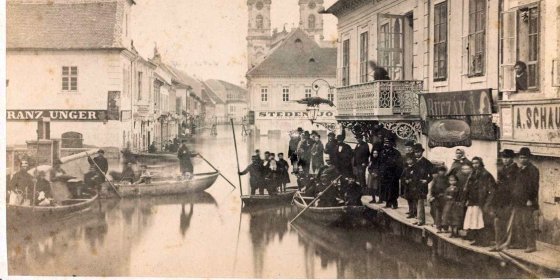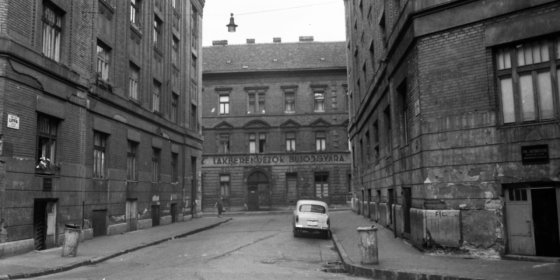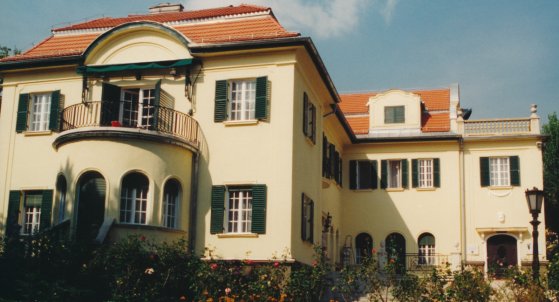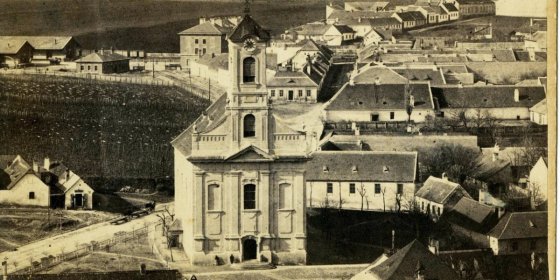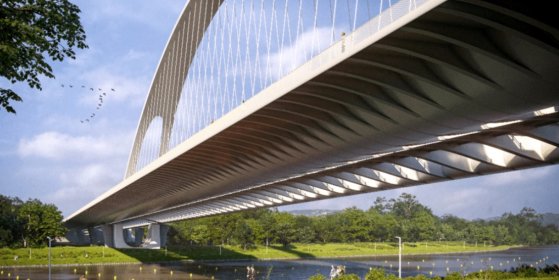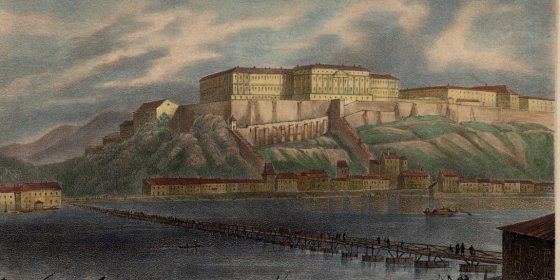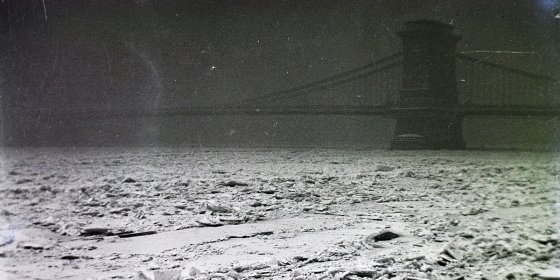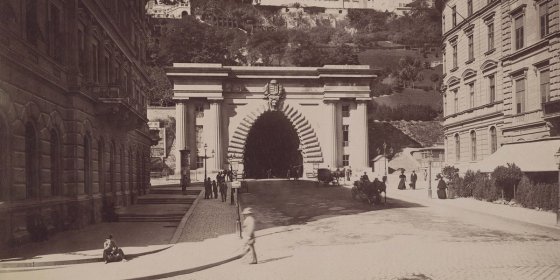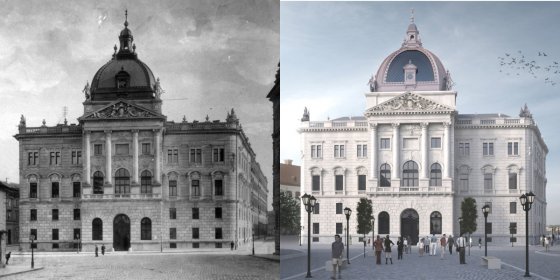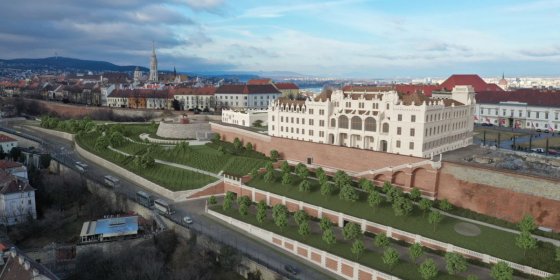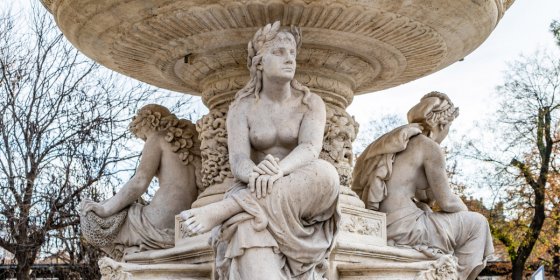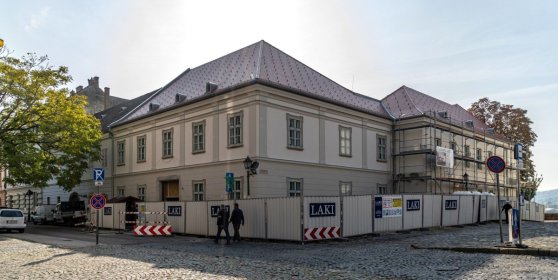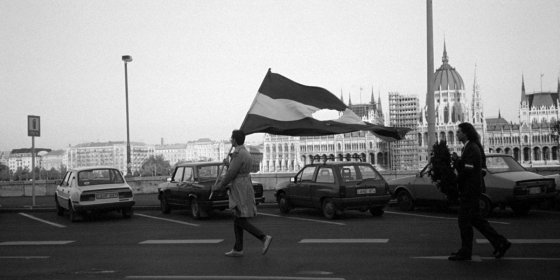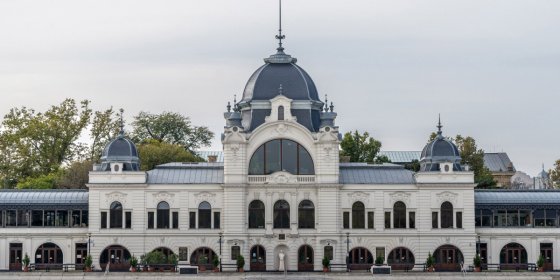 The „intertwined history” of the bridges and the city of Budapest
Which ideas and events have shaped the fate of bridges of Budapest and the cityscape? Alongside many other interesting facts, this question is also answered this newly published book by the Budapest City Archives, which introduces the history of bridges in Budapest.
The „intertwined history” of the bridges and the city of Budapest
Which ideas and events have shaped the fate of bridges of Budapest and the cityscape? Alongside many other interesting facts, this question is also answered this newly published book by the Budapest City Archives, which introduces the history of bridges in Budapest.
Buda
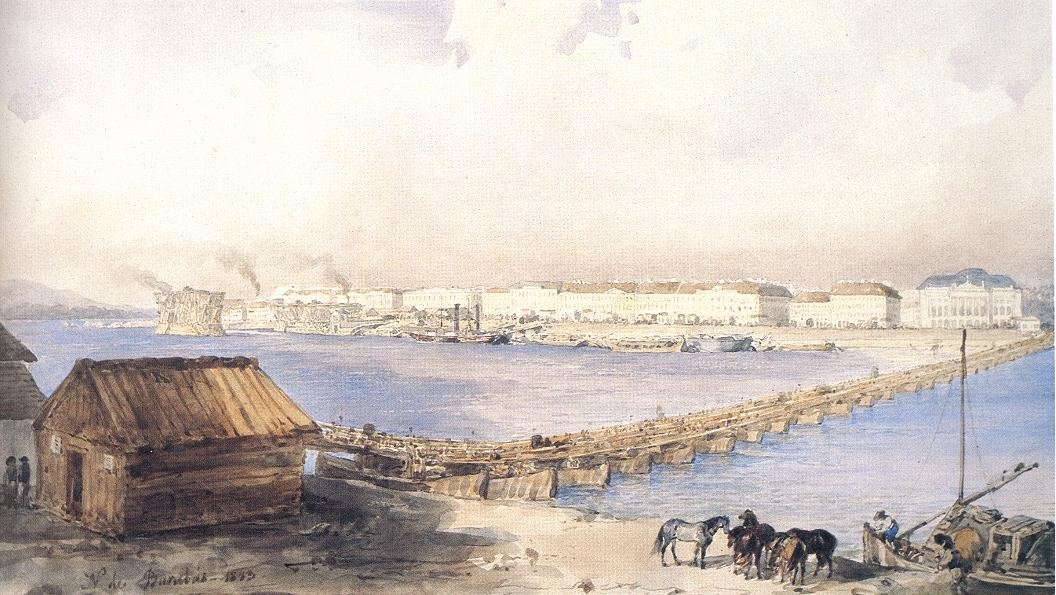 Life before the Chain Bridge
Life before the Chain Bridge
August 2, 2021 at 9:00 AM
The pontoon bridge between Pest and Buda was built due to the visit of Archduke Albert Casimir and was closed, with a little exaggeration, due to the trip of Count István Széchenyi. The pontoon bridge between the two banks of the Danube was built 255 years ago and was demolished 171 years ago.
The sanctuary of the St. Anne's Church in Batthyány Square was built 275 years ago
July 24, 2021 at 9:00 AM
One of the most characteristic buildings on the banks of the Danube in Buda is the St. Anne's Church in Watertown (Víziváros). The building on Batthyány Square in the 1st District also stands out among the Baroque architectural monuments of the capital. The history of the church dates back to the 18th century, its foundation stone was laid in 1740 and then it was built for a long time. Its sanctuary was built 275 years ago, in 1746, and it was used as a church until the building was completed. On the anniversary, Pestbuda visited the patinated church building of Buda.
From factory to an exciting cultural centre - Millenáris Park is 20 years old
July 8, 2021 at 9:00 AM
Today, Millenáris is a huge park and event centre in Buda, but once the Ganz factory operated here, on the site of which, with the partial retention of the halls, one of the largest cultural centres of Budapest was opened on 6 July 2001.
Once upon a time there was the Amusement Park - In the early 1800s, the former 'Vurstli' settled in the Városliget
July 4, 2021 at 9:30 AM
The history of the former Amusement Park of Budapest dates back a long time: performers in Városliget entertained the population of the capital since the beginning of the 19th century. The Vurstli, the Ős-Budavár, the Angol Park, and from 1950 the Amusement Park of Budapest were all created to entertain people. The Amusement Park, which has had several golden ages, was finally closed in 2013, and in its place the Holnemvolt Vár can now be seen and the Pannon Park is being built, which will perhaps restore the atmosphere of the former entertainment district.
A decades-old plan comes to life – A tunnel connecting Széll Kálmán Square with Városmajor
June 25, 2021 at 9:00 AM
The construction of the new pedestrian crossing connecting Széll Kálmán Square with the Postapalota (Postal Palace) and Városmajor started last autumn, the two ends of which met under Várfok Street almost a month ago. The tunnel, which is expected to be completed by the end of the year, will not only provide an unobstructed passage for pedestrians and cyclists in the area to Városmajor but will also create a new entrance to the former Postapalota, also known as the Buda Palace.
Széll Kálmán Square became a transport hub 80 years ago
June 18, 2021 at 9:30 AM
There was once a clay mine and then a sports field on the site of today's Széll Kálmán Square, where the tram junction and the pedestrian overpass, which defined the image of "Kalef" for decades, were completed 80 years ago, in June 1941. Then, in the middle of the square, a roundabout was created for trams, from where vehicles could depart in all directions. Modern passenger waiting areas and bus terminals were also built, but the development did not fully win the favour of the contemporary public.
Vehicle entry to Buda Castle first restricted 35 years ago
May 31, 2021 at 3:00 PM
Today car access to the castle is limited, and only midi-buses run within its ancient walls. Restrictions on access were introduced 35 years ago because traffic endangered historic buildings and the caves beneath the streets of the castle.
A place of worship in a cave – Cave Church turns 90
May 24, 2021 at 2:00 PM
One might think that the Cave Church on the side of Gellért Hill is an old church, although it is surprisingly young, not a hundred years old, as construction of the chapel itself began in 1924 and it was consecrated in 1931. During the communist era, a reinforced concrete wall closed it off from worshippers, which was only demolished in 1992.
Neither Pest nor Buda wanted a private company to build the first bridge in Budapest – the bridge law is 185 years old
May 4, 2021 at 9:00 AM
A law promulgated 185 years ago made it possible to build the first permanent Danube bridge connecting Buda and Pest. A long debate preceded the adoption of the bridge law because neither Pest nor Buda supported a private company building the bridge, as they did not want to waive their customs rights.
The SZOT Resort on Rózsadomb opened 50 years ago – Cable-car for guests never completed
April 18, 2021 at 9:30 AM
One of the most controversial buildings in Budapest, the SZOT Resort on Rózsadomb, has been part of the cityscape for half a century. The huge 114-meter-long building of the health resort once accommodated up to 500 guests at a time, who were transported to the nearby Lukács Baths by a minibus. Contrary to the original plans, neither a cable car nor a lift was built. The gigantic house later stood empty for decades, but today it has been reborn as a luxury residential building.
The longest monuments in Budapest: the history of the embankments
April 12, 2021 at 9:30 AM
Until the middle of the 19th century, anyone could walk down to the undeveloped, muddy banks of the Danube, but during a flood, nothing stood in the way of the water. The 12-kilometre-long embankments along Budapest's Danube Banks have become an essential part of the cityscape and protect the capital from floods. In connection with the freshly announced reconstruction of the Pest embankment, Pestbuda presents the history of these magnificent structures.
One of the oldest ways of the cross in Budapest – The Kiscell Calvary is over 200 years old
April 3, 2021 at 11:00 AM
During the Easter period, people used to visit many calvaries, i.e. Ways of The Cross, in Buda and Pest. One of the oldest calvaries in the city, built 200 years ago and starting next to the Kiscelli Museum, is still one of the most visited Ways of The Cross in Budapest today. Even in 1956, the year of the revolution plenty of people walked the Way, as can be seen in a photo from 65 years ago.
The first modern shopping centre in Budapest – The Skála store in Buda opened 45 years ago
April 2, 2021 at 9:00 AM
There was a store in Buda that brought new colour and new quality to the slow socialist state store system. The modern design, the huge floor space of more than 22,000 square metres, and the relative abundance of goods contributed to the rapid rise in the popularity of the Skála store, which opened 45 years ago on 2 April 1976.
János Esterházy in Budapest – The memorials of a martyr
March 14, 2021 at 6:00 PM
János Esterházy was an outstanding Hungarian statesman, a martyr of the 20th century. He alone did not vote on a bill allowing the deportation of Jews in the Slovak parliament. Although his work is mainly related to Upper Hungary (in present-day Slovakia), Esterházy lived in Budapest several times, and many monuments in the capital are connected to him. Among others, he saved the lives of thousands of Slovak, Hungarian and Jewish people and helped evacuate more than a hundred thousand Poles to Hungary and Budapest. His beatification process began in 2019.
The flood of 1876 – Devastation in Buda and Pest
February 28, 2021 at 9:00 AM
The flood of 1838 is part of our collective memory; everyone in Budapest has heard of it. However, it was not the last major flood that wreaked havoc in the capital. In 1876, 145 years ago, the river flooded, mainly damaging Buda but causing houses to collapse in Pest. Today, Budapest is safe from floods, which is mainly thanks to our ancestors' efforts in the 19th century.
Fifty years ago, humans weren’t the most numerous inhabitants of Budapest
February 26, 2021 at 9:00 AM
Rats are one of the most unpopular animals. However, they are also dangerous as they spread countless diseases. In the past, every big city was teeming with these rodents, and even today, only a few can say they are almost rat-free. Budapest is one of them.
An unexpected safe haven – Actress Gizi Bajor sheltered the hunted during the terrors of World War II
February 12, 2021 at 7:00 PM
The outstanding Hungarian actress, Kossuth prize-winner Gizi Bajor died seventy years ago. Her name is known by everyone that is even slightly interested in Hungarian theatre. What is less known is that her villa was a safe haven in 1944 and 1945, where she sheltered, among others, Jews and famous writers in hiding. Since her death, the villa on Stromfeld Aurél Road in the 12th District has preserved her memory as the Gizi Bajor Museum.
Cut in half and expanded – The not so everyday history of a Church
February 4, 2021 at 8:30 AM
There is an almost average 18th-century church, the history of which is much more exciting than its simple yellow walls would suggest. It was once cut in two and expanded – and it also served as the venue of a famous wedding 185 years ago. The happy couple were not everyday people. The bride was the widow of Károly Zichy, and the groom was István Széchenyi.
A forgotten bridge on the Danube – Many forget the second road bridge under construction in Budapest
January 19, 2021 at 9:00 AM
Two bridges are being built as part of the Galvani Bridge development project. The cable-stayed structure spanning the main Danube branch has been discussed in detail but the other bridge planned to cross the Soroksár branch of the river has almost been forgotten, despite being a major and beautiful piece of infrastructure.
Buda Castle and drinking water: Water pumps designed by Adam Clark completed 165 years ago
January 12, 2021 at 12:00 PM
A settlement needs water. And Buda Castle had various water supplies even in the middle ages. The city was supplied with water from the springs of Svábhegy and the Danube. Until the middle of the 19th century, pumps powered by animals pushed the water to the top of the hill. The first engine-powered pumping station in Buda was established 165 years ago, opening in 1856. Its designer was Adam Clark, the engineer that led the construction of Chain Bridge.
A funeral gave life to the bridge that created Budapest
January 7, 2021 at 9:00 AM
Two hundred years ago, a younger Hungarian hussar officer made a rather reckless statement to a friend. His words had many consequences and changed the lives of many forever. The officer, in fact, was only in a hurry to reach his father's funeral.
Rebirth: Historic palace at 47 Andrássy Avenue restored
January 6, 2021 at 9:00 AM
The building has housed one of the most beautiful cafes in Budapest, a casino, a pharmacy, a glove shop and a car dealership. Until recently, the building that once housed Café Palermo was a black sheep on Andrássy Avenue, but the era of real-estate related corruption and degradation has come to an end. Standing on the corner of Liszt Ferenc Square and Andrássy Avenue, the building currently hidden by a safety net, which hides the luxury apartments being built as part of the restoration.
A dream of the Reform Period – A tunnel to run through Castle Hill
January 5, 2021 at 3:00 PM
Even when building Chainbridge the builders knew, the Buda bridgehead is in the wrong place, a point which is difficult to reach with a cart or carriage. A solution was needed, but Castle Hill stood in the way. Eventually, a company was founded to break through the hill 175 years ago.
Rebuilt Headquarters of Hungarian Defense Forces will act as gate to the Palace of Buda Castle
December 22, 2020 at 9:00 AM
One hundred and twenty years ago its massive dome was the pride of Dísz Square. However, for the last 70 years, the military headquarters' partially deconstructed remains have lacked form and function. However, this is set to change. After a partial renovation between 2012 and 2014, its continued reconstruction will begin next year, restoring the building to its former glory, and serving visitors to Buda's Castle District.
Fehérvári Roundel and Western Gardens of Buda Castle to be renovated, new parking garage planned
December 11, 2020 at 10:00 AM
The Fehérvári Roundel and its surroundings are to be demolished and rebuilt to its original size in Buda Castle. One of the main goals of the National Hauszmann Program is to allow visitors to Buda Castle to explore the Castle District by walking around it on its walls. The Fehérvári Roundel plays a major role in enabling this. Following the reconstruction, a previously closed section of the western castle wall will be opened, connecting the roundel to Csikós Courtyard. The western gardens will be revitalised to evoke the vineyards and orchards that once surrounded Budavár. Várgarázs III. will meanwhile further reduce the number of cars parked in the Castle.
Renovation of Danubius Fountain Completed – Footless Szava restored
December 9, 2020 at 2:00 PM
One of the most beautiful and largest fountains in Budapest, the Danubius Fountain on Erzsébet Square, has undergone a comprehensive renovation in recent months. Its stones have been cleaned, missing parts replaced, and even worn gilding replaced.
Stunning house with famous underground safe renovated in Buda Castle
November 13, 2020 at 10:00 AM
The house under 72 Úri Street and its underground tunnels once housed Hungary's gold reserves during the second world war and 600–700 people alongside them. In the 1950s the location was used to control the electrical grid. The house has newly been restored to its original late-baroque design as the educational centre of the Hungarian National Bank.
Ten stunning domes lost from the Budapest cityscape
November 8, 2020 at 10:00 AM
Following a recent decision reached by the government, the domes and roof ornaments of buildings may be reconstructed around the country. The first three will be completed within a pilot project in Budapest. This list from Pestbuda collects ten buildings that were once famous for their roofs and which we believe should be among the first to be replaced.
A glance into the past – Budapest in 1990
October 31, 2020 at 9:00 AM
For those who have always lived in Budapest, the changes of the last thirty years may not be obvious, the buildings lost and built every little change. Some may not even remember what was on people's minds during the fall of communism, or even just how everyday life happened. On the thirtieth anniversary after the creation of the democratic Budapest Local Council take a glance back in time with PestBuda.
Imre Francsek – Lesser known architect behind City Park Skating Rink died 100 years ago
October 30, 2020 at 11:00 AM
The architect behind the ice skating rink in City Park, the colonnade of the Saint Gerard statue, the Buda Civic Casino and several residential buildings. If all his plans had been carried out, Calvin Square and Szabadság Square would be very different. At one point in his career, he even proposed pushing the entire Dreher Palace a few metres to the side. Imre Francsek died one hundred years ago.
More articles
 The „intertwined history” of the bridges and the city of Budapest
Which ideas and events have shaped the fate of bridges of Budapest and the cityscape? Alongside many other interesting facts, this question is also answered this newly published book by the Budapest City Archives, which introduces the history of bridges in Budapest.
The „intertwined history” of the bridges and the city of Budapest
Which ideas and events have shaped the fate of bridges of Budapest and the cityscape? Alongside many other interesting facts, this question is also answered this newly published book by the Budapest City Archives, which introduces the history of bridges in Budapest.
 The Bridge Report, which brought a turning point in the history of Budapest
A travel report that changed the history of Pest and Buda, as well as Hungary. The little book contributed to the change of half a thousand years of legal customs and the implementation of an investment of unprecedented size and technical quality. This book was The Bridge Report [Hídjelentés in Hungarian].
The Bridge Report, which brought a turning point in the history of Budapest
A travel report that changed the history of Pest and Buda, as well as Hungary. The little book contributed to the change of half a thousand years of legal customs and the implementation of an investment of unprecedented size and technical quality. This book was The Bridge Report [Hídjelentés in Hungarian].
 Drama on the university wall - The heroic monument was planned 95 years ago
In the constant hustle and bustle of the Egyetem Square in Pest, the students may not even notice the monument that decorates the short section of wall between the church and the central building of ELTE. However, it commemorates their predecessors, the heroes who fought for their country in World War I, and those who heroically helped them. The first design of the dramatically collapsing soldier was born in 1928, ninety-five years ago.
Drama on the university wall - The heroic monument was planned 95 years ago
In the constant hustle and bustle of the Egyetem Square in Pest, the students may not even notice the monument that decorates the short section of wall between the church and the central building of ELTE. However, it commemorates their predecessors, the heroes who fought for their country in World War I, and those who heroically helped them. The first design of the dramatically collapsing soldier was born in 1928, ninety-five years ago.

